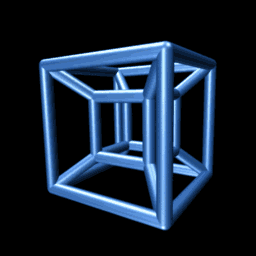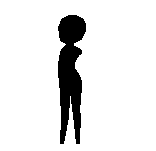it begins
Tuesday, February 26, 2013
Thursday, February 21, 2013
music interpretation -- illustrator
i went with a pretty simple drawing ... the song made me think of water and sloppy puddles but also silliness, which made me think of a pink/yellow color scheme.
Tuesday, February 19, 2013
artist post 3 - tony robbin
An artist who stuck out to me from the Paul Hertz reading was Tony Robbin, an artist and geometry aficionado. When I first read about his exploration of different dimensions and perspectives and means of conveying them on a 2 dimensional canvas, I thought of Cezanne and his paintings composed of multiple perspectives knitted together, or the Futurist artists who blended abstract imagery to create a sense of movement and time progression.

2006-7 by Tony Robbin. Acrylic on canvas
Like paintings from those movements, Robbin's art stands out not just for its engaging color palette, but its genuine dimensionality. Even without an understanding of the method or mathematics underlying the above painting, I can appreciate the shapes and objects that show up, from up close or at a distance, as defined by color or by line. Wikipedia places Hertz under an art movement called "pattern and decoration", which both embraced floral geometry and rejected the flatness of minimalism.
What interests me most about Robbin, however, is the contribution he's made to visualization of the 4th dimension. He recalls his interest in digital art as stemming from an encounter with CGI tesseracts in 1979.

One popular visualization of a tesseract, a four-dimensional shape related to the 3-dimensional cube, represented as a 3D CGI model. Created by Jason Hise in Maya.
Robbin believes not only in the importance of visualization for scientific thought, but in the importance of aesthetic, of beauty and elegance: "Art based on geometry is expected to be dry with only primary colors - who wrote those rules?"

Robbin's contributions to the world of geometric computer imaging and 4D-to-3D projection have been greatly important scientifically, but his paintings stem as much from a love of color and form as from a love of the mathematics underlying them.
Here's Robbin discussing his interests in a vid from the 80's:
2006-7 by Tony Robbin. Acrylic on canvas
Like paintings from those movements, Robbin's art stands out not just for its engaging color palette, but its genuine dimensionality. Even without an understanding of the method or mathematics underlying the above painting, I can appreciate the shapes and objects that show up, from up close or at a distance, as defined by color or by line. Wikipedia places Hertz under an art movement called "pattern and decoration", which both embraced floral geometry and rejected the flatness of minimalism.
What interests me most about Robbin, however, is the contribution he's made to visualization of the 4th dimension. He recalls his interest in digital art as stemming from an encounter with CGI tesseracts in 1979.

One popular visualization of a tesseract, a four-dimensional shape related to the 3-dimensional cube, represented as a 3D CGI model. Created by Jason Hise in Maya.
Robbin believes not only in the importance of visualization for scientific thought, but in the importance of aesthetic, of beauty and elegance: "Art based on geometry is expected to be dry with only primary colors - who wrote those rules?"

Robbin's contributions to the world of geometric computer imaging and 4D-to-3D projection have been greatly important scientifically, but his paintings stem as much from a love of color and form as from a love of the mathematics underlying them.
Here's Robbin discussing his interests in a vid from the 80's:
Thursday, February 14, 2013
Monday, February 4, 2013
artist post 2
My favorite pixel animator since I first found them on dA many years back is Syosa, a 23 year old Japanese artist.
I found an interview with Syosa here, in which she discusses her favorite color palettes and her interest in the simplicity of pixel art (she compares it to haiku) but also her belief in its potential as an art form. Syosa's art is always recognizable for its beautiful color palettes and fluid, organic movement. She creates her art in the program GraphicsGale. Syosa recently graduated from grad school and has a quiet job at a printing company. She's created some small games, but has not yet forayed into the bigger gaming market, which is a shame.
Some more of her work -- also, here's a small picture book she created, which showcases just how painterly her art is, despite being pixellated.
I found an interview with Syosa here, in which she discusses her favorite color palettes and her interest in the simplicity of pixel art (she compares it to haiku) but also her belief in its potential as an art form. Syosa's art is always recognizable for its beautiful color palettes and fluid, organic movement. She creates her art in the program GraphicsGale. Syosa recently graduated from grad school and has a quiet job at a printing company. She's created some small games, but has not yet forayed into the bigger gaming market, which is a shame.
Some more of her work -- also, here's a small picture book she created, which showcases just how painterly her art is, despite being pixellated.
A gif showing her step by step process:
An alpaca drawn at different resolutions, in pixel art:
Screenshot from her game "Gravedigger"
A cross stitched image, using the same methods as her pixel art:
Subscribe to:
Comments (Atom)











